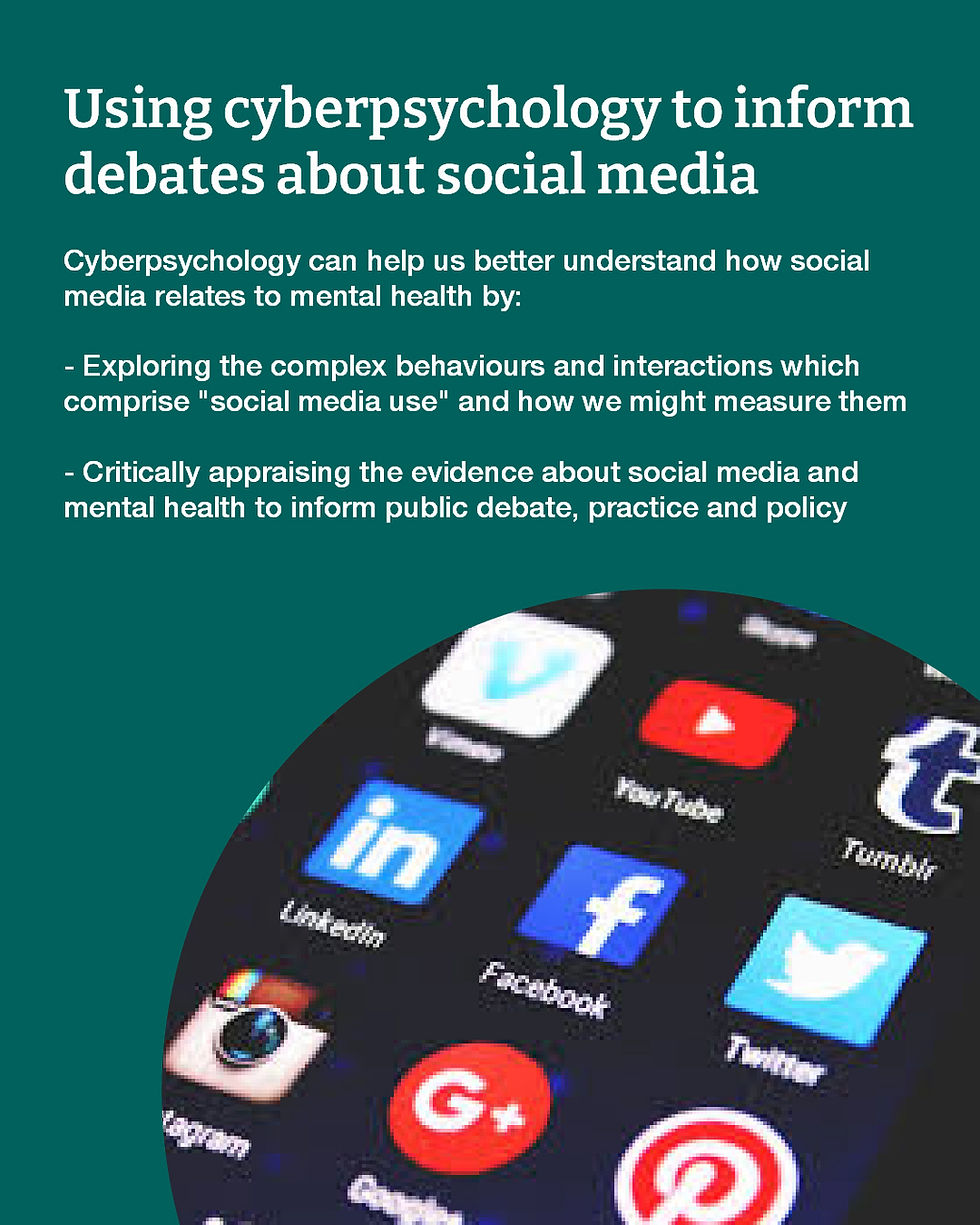Conceptual chaos in cyberpsychology
- LindaKKaye

- Jun 24, 2022
- 4 min read
I am an "active" social media user but might be considered to use it too excessively. How is this likely to relate to my well-being (e.g., loneliness)?
Largely positive for well-being
Largely negative for well-being
Could be both/either
Unsure
I’ve been involved in academic work relating to issues such as “screen-time”, social media and well-being and “problematic use” of technologies over a number of years. Whilst, I have been involved in scrutinising these areas somewhat independently as different projects or papers, something that has bothered me for some time is the fact that these haven’t “spoken” very clear to one another.
I’m particularly considering the two somewhat separate literatures of so-called “active vs passive” use of social media and “excessive” social media use.
To start with, I’m using the term “excessive use” very tentatively, as terminology in this area is highly interchangeable. But basically, what I’m referring to when I say “excessive use” of social media, is what might be considered to be using personal social media accounts too much, or more than is considered typical or healthy.
Regarding the “excessive use” literature on social media, it is widely suggested in both academic and public spheres, that this is a risk factor for mental well-being. Evidence suggests there may be relationships (albeit small effects in many cases) between “excessive” social media use and symptomology relating to depression, anxiety, loneliness and even suicide ideation.
Figure 1, crudely illustrates the hypothesised relationship between “excessive” use of social media and well-being. Namely, as time spent using social media moves towards being considered excessive, user well-being is proposed to be more negative.
Figure 1.

In an associated literature, which interestingly hasn’t been especially well integrated to the aforementioned work, there is also evidence that “active” use of social media is better for well-being, whereas conversely, “passive” use is detrimental. Here “active” use refers to behavioural engagement with social media, such as posting updates and interacting with others, and “passive” refers to simply observing others’ content.
Figure 2 crudely visually what this may be expected to look like.
Figure 2.

What’s the issue?
Taking these figures side-by-side suggests there may be some issues here. Let’s take a couple of scenarios:
Person A is an “active” social media user, and spends a significant amount of time on social media every day, perhaps to the extent of this being considered an “excessive” amount.
Active use is supposedly good, but excessive use is supposedly bad. What hypothesis would people suggest here about how this relates to their well-being?
Let’s take another example:
Person B uses social media an average amount but is relatively “passive” in their behaviours when using it.
Not using excessively = good; but passive = bad? Again, what hypothesis wins here?
This is what these two scenarios might look like in visual form.
Figure 3.

As I illustrate with these scenarios, these competing ideas make it difficult to establish a basis about how these work alongside each other and how we may draw hypotheses about how social media use (based on the combination of volume/time and type of use) relate to well-being.
I am yet to see any integration or scrutiny in the literature about how these somewhat disparate literatures “speak” to each other, despite them both being relatively prominent areas of study in the field of cyberpsychology.
As an aside, more recent work (our own included) has certainly called for a reconsideration of a simple “active/passive” dichotomy when considering social media use, but this is notwithstanding the obvious issues which still exist in associated literatures. Recent research has even suggested that even “passive use” as a category can be challenged as being unidimensional as this can consist different types of behaviours.
The Digital Goldilock’s hypothesis is a useful framework to draw on to understand some of these issues, which indicates how there may be an optimal amount of time spent on social media in respect of its relationship with well-being. (See Figure 4).
Figure 4.

However, the curve illustrated here certainly is unlikely to be a universal observation. Not only are there expected differences between and within people, there are arguably different degrees of curve skewness which may be expected here based on different types of social media use. For example, more “passive” use may be more positively skewed/right skewed whereby the optimal point of well-being occurs further towards the left side of the X axis compared to more interactive, active types of use which may be more negatively/left skewed. It is also debatable whether the tail of the curve would even drop so far into negative well-being territory in all instances. I am optimistic that in the near future, we may have good data available which helps better accommodate these various scenarios.
A resolution?
Certainly it is the case that much more focus is needed on the “how” of social media, such as taking account of types of behaviours and interactions which may take place. Whilst there is a developing body of work tackling these issues, most debates relating to social media use still are restricted to “time spent” which is doing a disservice to the intricacies of behaviour which take place on there and how these may relate differentially to well-being.
Integrating the “how” of social media into the study of issues such as “excessive use” will also help elucidate the extent to which the observed relationship between “excessive use” and poorer well-being may be varied based on the different ways people use social media. As such, the relationship is likely to be far from linear and universal.



Comments